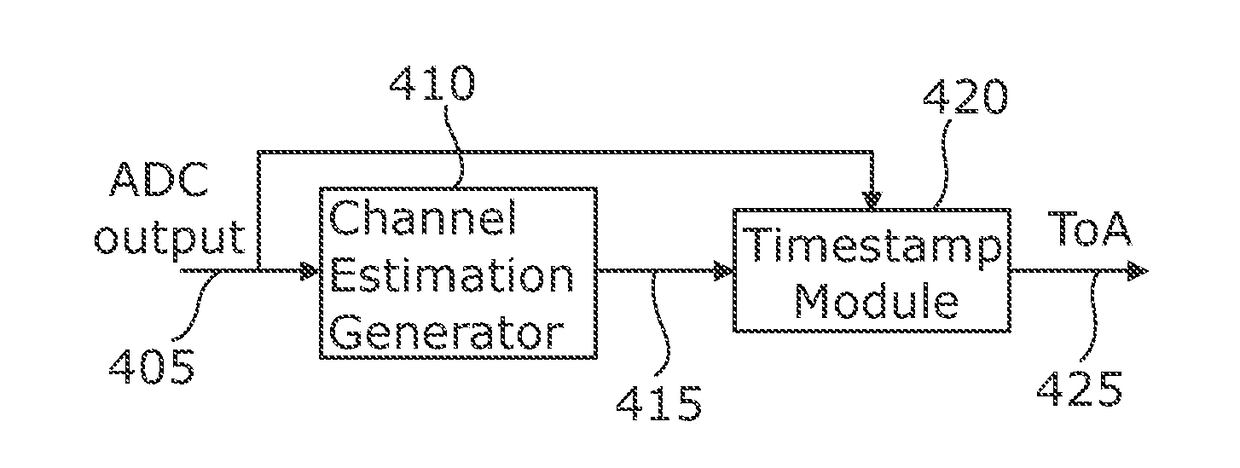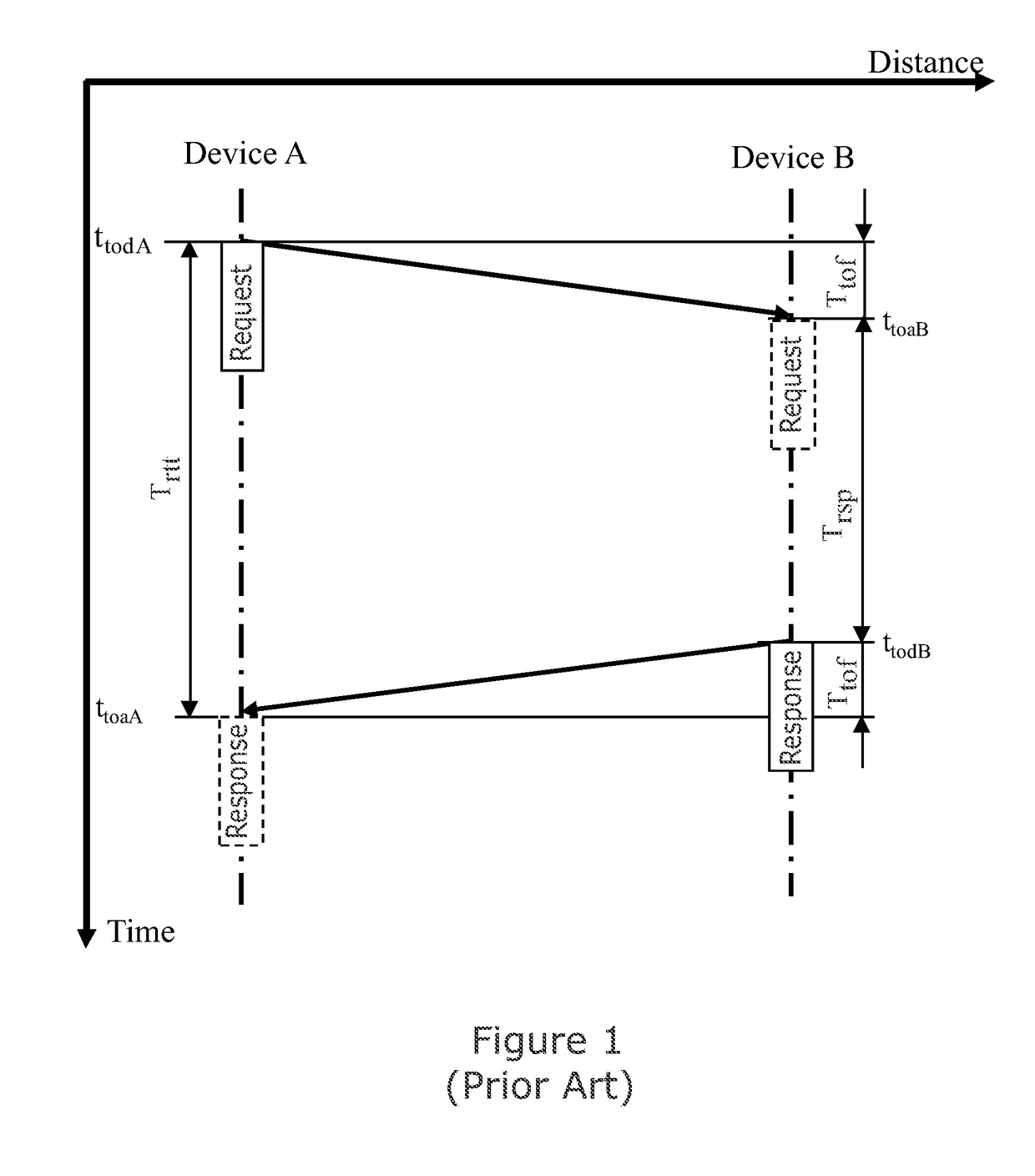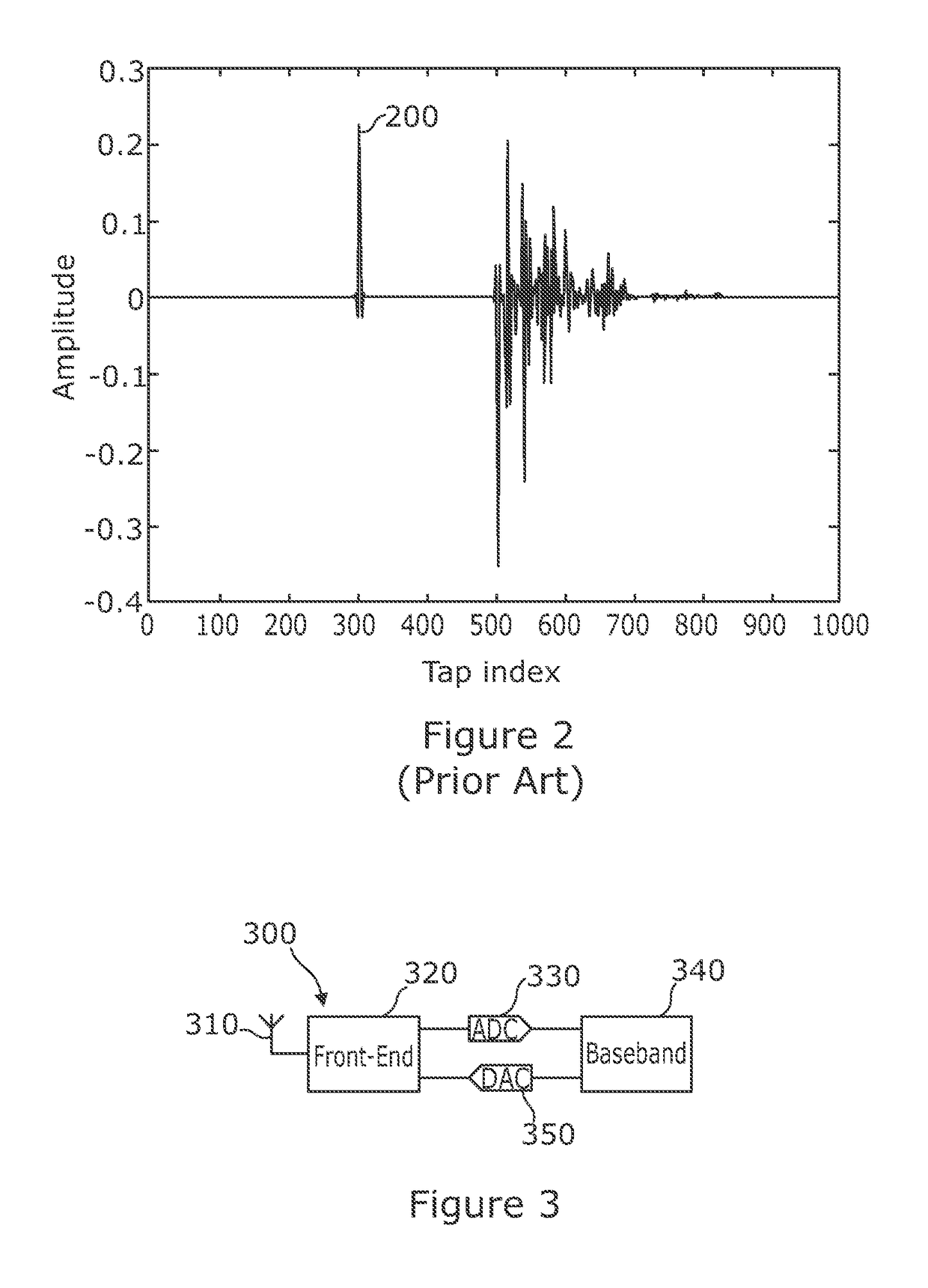Processing module and associated method
a processing module and module technology, applied in the field of processing modules for communication devices, can solve the problems of inability to predict actual distance gain, inability to take correct (early) toa measurements, etc., and achieve the effect of improving the auto-correlation of the validation sequen
- Summary
- Abstract
- Description
- Claims
- Application Information
AI Technical Summary
Benefits of technology
Problems solved by technology
Method used
Image
Examples
example b
[0163 uses prior knowledge of the insecure channel estimate, C, of the impulse response and the secure training sequence, PSTX. The procedure is similar to example A but no multi-path components are zeroed from the insecure channel estimate, C. An expected correlator output is pre-calculated and subtracted from the actual correlator output. If the result is random noise (i.e. no value exceeds the detection threshold), then all paths detected in the insecure channel estimate, C, are genuine and the ranging measurement can be accepted as valid. That is, in example B, validation is achieved by removing from the secure channel estimate all expected path components from the insecure channel estimate. One implementation of example B is described below with reference to steps (a) to (d):[0164]a. The cross-correlation, CCSRX, of transmitted secure training sequence, PSTX, and the correlation pattern of the receiver, PSRX is calculated:
CCSRX(n)=PSTX(n)⊗PSRX(−n)[0165]b. The cross-correlation ...
example c
[0170 uses prior knowledge of the insecure channel impulse response, C, and the secure training sequence PSRX. The main lobe of cross-correlation result of the correlation pattern, PSRX, (validation pattern) and the secure training sequence, PSTX, (validation sequence) is set to zero, so that only the side-lobes remain. This result is then convolved with the known, insecure channel impulse response to calculate the expected cross-correlation contribution of the channel caused only by the side-lobes. The expected side-lobe contribution is then subtracted from the actual received correlator output determined for the secure training sequence. One implementation of example C is described below with reference to steps (a) to (d):[0171]a. The cross-correlation of transmitted secure training sequence, PSTX, and the correlation pattern of the receiver, PSRX is calculated to provide a first cross-correlation function, CCSRX:
CCSRX(n)=PSTX(n)⊗PSRX(−n)
FIG. 27 illustrates a relative amplitude ag...
example f
[0193 is based on example D but uses the secure channel estimate, CS, (without side-lobe correction) as a reference to calculate the contribution of the side-lobes, rather than the insecure channel estimate, C, as in example D. This approach is similar to that described previously with reference to example E. Example F is therefore also suitable for use where no insecure channel estimate is available. The use of the secure channel estimate instead of the insecure channel estimate introduces residual errors because side-lobes are inadvertently considered as valid multipath components. The residual error can be reduced by applying an iterative algorithm. As with examples A to E, example F may also be performed by the validator 1170 of the receiver of FIG. 11. One implementation of example F is described below with reference to steps (a) to (d):[0194]a. The cross-correlation of transmitted secure training sequence, PSTX, and the correlation pattern of the receiver, PSRX is calculated t...
PUM
 Login to View More
Login to View More Abstract
Description
Claims
Application Information
 Login to View More
Login to View More - R&D
- Intellectual Property
- Life Sciences
- Materials
- Tech Scout
- Unparalleled Data Quality
- Higher Quality Content
- 60% Fewer Hallucinations
Browse by: Latest US Patents, China's latest patents, Technical Efficacy Thesaurus, Application Domain, Technology Topic, Popular Technical Reports.
© 2025 PatSnap. All rights reserved.Legal|Privacy policy|Modern Slavery Act Transparency Statement|Sitemap|About US| Contact US: help@patsnap.com



